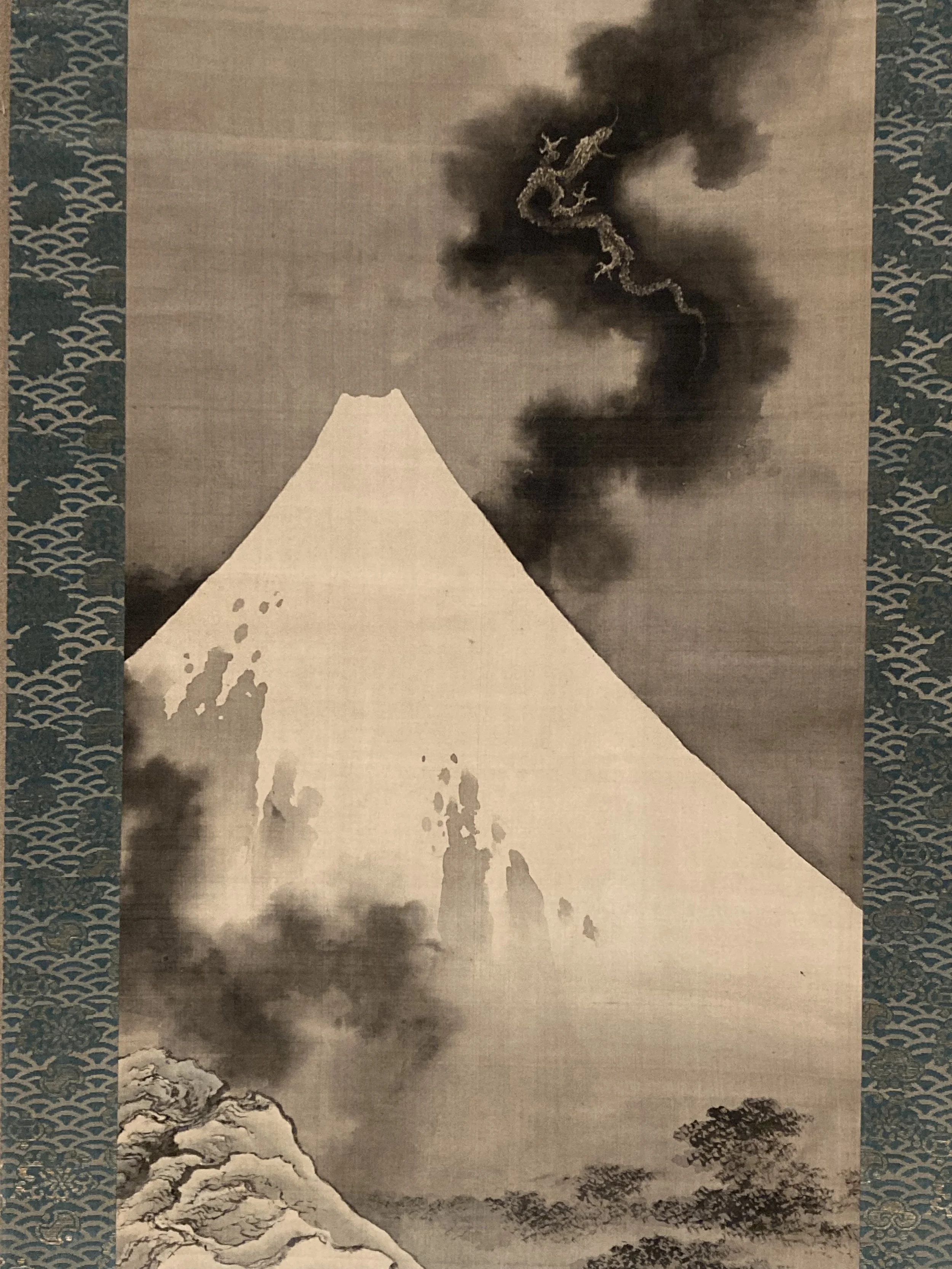Hokusai’s Haven for Creative Genius
Best-known for his epic wood-block print “Great Wave Over Kanagawa” or “The Great Wave”, from the series “Thirty-Six Views of Mount Fuji”, Katsushika Hokusai was to spend his final years “hidden away”, passionately absorbed in making a rare collection of free-hand paintings, quite unlike any of his previous ukiyo-e print-works which he is most world-renown for. During these last prolific years, even Hokusai was to have described himself not as an ukiyo-e craftsman, but simply as an “old man mad about painting”.
On a very rainy, early morning recently, a couple of us from the Pagong team excitedly boarded the Shinkansen “Bullet Train” at Kyoto Station, and after two transfers, 5 hours later, arrived at Hokusai’s final creative destination for making his art, a tiny agricultural town called Obuse, tucked away in the mountainous Nagano region, west of Tokyo.
Obuse, still a small, rural town is well-known for its chestnuts and delicious Japanese sake. Most notable as well, are the many buildings and other traces of the era when Hokusai visited, carefully preserved throughout without commercialism; a beautifully blended townscape of the historic past with the present.
“Yuzenro” meaning “permission to do as you please, unconcerned for what others might think”, a private dwelling, where Hokusai was free to live and paint in Obuse.
Hokusai was born in 1760 in Edo, modern-day Tokyo, and raised in a totally urban culture, Edo being the “mecca” for arts and entertainment. One would think this alone would make a perfect setting for the selling of his artworks, however by no means was Hokusai ever considered a “well-to-do artist”. In fact he was not wealthy at all, and was to have changed addresses ninety-three times during his life according to his biography.
This was due in part by a number of epochal incidents which would take place throughout Hokusai’s long career, causing unsettling set-backs, however, there was one fateful incident in particular, which would completely change the course of his later years for the better. It was the introduction by a friend to Takai Kozan, a supplier of goods to nobles in Kyoto, and one of the wealthiest farmer-merchants in his hometown of rural Obuse, Nagano.
Kozan, being highly-educated, kept company with leading thinkers and literati of the day; could write poetry, studied several languages-including Chinese, and most importantly, was a patron of the arts. This “chance” meeting with Takai Kozan, then in his 30’s, and Hokusai in his 80’s, became a lasting friendship of deep mutual respect, and the perfect environment for Hokusai’s boundless creativity.
It was in the autumn of Hokusai’s eighty-third year that Kozan invited Hokusai to Obuse, the first of four visits during which Kozan commissioned Hokusai to make the extraordinary brush paintings that marked his later years. However, Hokusai still met challenges. First of all his age, and it’s also most important to note, the actual distance that Hokusai would have needed to travel getting from Tokyo to Obuse. Today, a person can can hop on the Shinkansen, and arrive within a few hours from Tokyo, as we did, however for Hokusai, this journey of over 240 kilometers,(roughly 150 miles) would have taken him nearly a week on foot, an accomplishment of sheer will and determination.
In visits between 1844 and 1846, Hokusai was commissioned to paint panels for two festival floats, the Kanmachi festival float and the Higashiyama festival float; both of which capture his strength, creativity, and passion extraordinary for an artist over 85 years old, with fewer than 5 years to live.
The “Kanmachi” festival float, one of two festival floats painted by Hokusai, which would have been hand-carried throughout town on festival days.
These magnificent works, as well as a collection of 80 paintings, 130 commercially published prints, 85 privately commissioned prints, and 250 block-printed books are on permanent display at the Hokusai-kan Museum, a “gem”, which opened in 1976, fulfilling a long-held desire of the Obuse community.
“Masculine Wave”, hand-painted for a ceiling panel of the Kanmachi float.
“Dragon”, hand-painted for a ceiling panel for the Higashiyama festival float.
Zen Buddhist-Ganshoin Temple in Obuse.
Perhaps one of the most impressive works due to its incredible size, is a ceiling painting of a phoenix at the Zen Buddhist-Ganshoin Temple, founded in 1472. Kozan being a member of the temple, the painting was commissioned for the temple’s great room of the main hall.
A brilliantly colored masterpiece, it measures more than 30 square meters (323 square feet). Hokusai painted the work, his absolute largest, at the age of 89. The pigments alone, which used minerals such as cinnabar, and malachite were imported from China, costing more than 2 kilos of gold, and have remarkably retained their luster and vividness even today. Also worth mentioning, showing the playfulness of the artist, the eye of the phoenix was painted intentionally to follow its viewer.
Hokusai would receive financial support, and more importantly, the deep bond of friendship from Takai Kozan for the rest of his life. There was no one else who completely understood Hokusai’s ambitions better than Kozan; providing him with a safe, secure environment for nothing short of genius.
Hokusai died at the age of ninety, at his temporary residence on the grounds of Henjoin Temple at Asakusa Shoten-cho. The dragon in “Dragon Flying Over Mount Fuji”, a painting which was to have been painted in Hokusai’s final year, could possibly have been the artist’s depiction of himself, “a freed dragon, flying into the arms of the gods of creation…”
We are sincerely grateful to you Katsushika Hokusai!…For leaving the art world a richer place with over 30,000 works… a dream legacy brimming with prints, paintings, and outstanding drawings for the enjoyment of many, many fortunate generations to come!
DOMO ARIGATO GOZAIMASU!!








